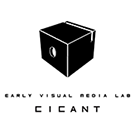Edgar Pêra – Experimentação, Vanguardismo e Angústia no 3D Português [PT]
Érica Faleiro Rodrigues
This paper is based on a set of exclusive interviews the Portuguese filmmaker Edgar Pêra has granted to this author. Edgar Pêra is, by far, the most renowned and prolific 3D filmmaker in Portugal, with films released in cinemas and main cultural art centres, including mainstream venues. From his wide-ranging 3D oeuvre, we can highlight “Cine Sapiens” (2013), part of a tryptic titled “3x3D”, which also included 3D works by Jean-Luc Godard and Peter Greenaway.
Pêra’s constant search for experimentalism and multidisciplinarity has also resulted in “Cine- Koncert 3D “(2019), a collaboration with Portuguese musician Vitor Rua. The title of this paper arises from a text by Edgar Pêra in which the filmmaker explains the major difculties he found when trying to screen the 3D film “The Amazed Spectator” (2016) in Portugal with the right technical conditions. The aim is to probe and articulate three diferent topics. First, Pêra’s creative process, focusing on the process by which his films materialise from the ideas that underpin them and the materialities that support their execution. Second, the reasons that lead Edgar Pêra to start a body of work in 3D and the impact a longstanding reputation as an experimental and avant- garde filmmaker has had on this. And third, the main obstacles that have arisen when trying to screen his 3D films in Portugal.







